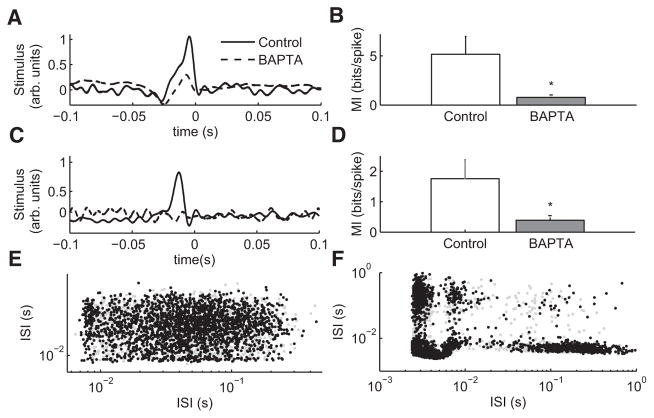FIG. 5.
BAPTA significantly affects pyramidal cell responses to sensory input. A: representative spike triggered averages for global noise stimulation for control (dashed) and BAPTA (black) conditions. In both cases, the action potential occurs at time 0. B: BAPTA significantly reduces the mutual information rate for global stimulation. C: representative spike triggered average for local noise stimulation for control (dashed) and BAPTA (black) conditions. In both cases, the action potential occurs at time 0. D: BAPTA also significantly reduces the mutual information rate for local stimulation. E: ISI return map under control conditions for baseline (gray) and stimulated (black) activity. Note that both maps are quite different as can be seen by the relative lack of overlap between points. F: ISI return map after treatment with BAPTA for baseline (gray) and stimulated (black) conditions. Note the large overlap between both conditions indicating that the activity is quite similar under both baseline and stimulated conditions, thereby implying that the stimulus has very little effect on the neural activity as seen by the spike triggered average. The asterisks indicate statistical significance at the P = 0.05 level.

